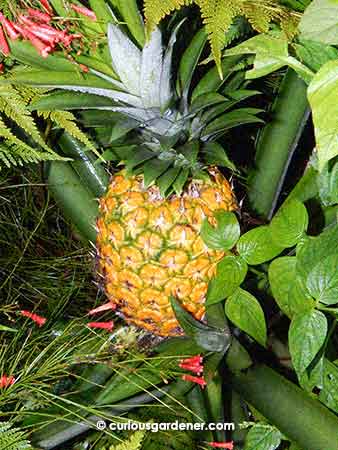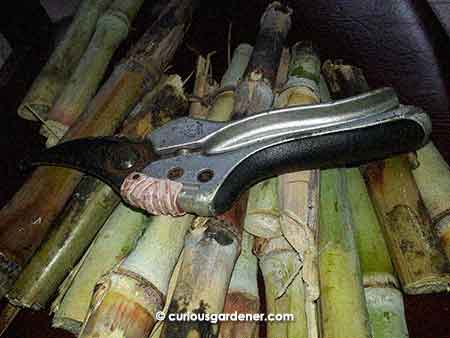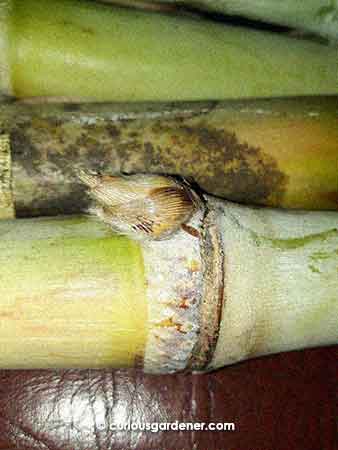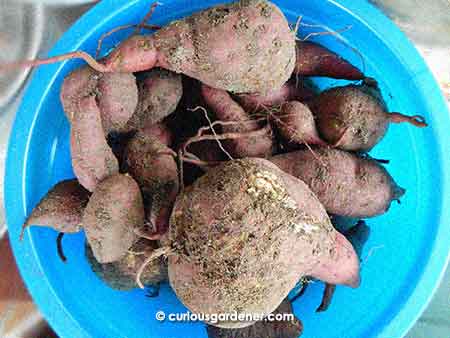Last May, we harvested our first pineapple, and I decided to leave one sucker on the parent plant to continue growing. This would give what is known as a ratoon crop. It grows faster than starting a new plant, but the fruits are reportedly smaller. Me being me, I had to test this out for myself.
It took almost eleven months before the ratoon plant started flowering, and as we watched the fruit develop, it definitely looked smaller than the first fruit. There seemed to be fewer flowers, which made the overall size of the fruit smaller. I was disappointed, but this was an experiment, after all. Compared to the original plant that had taken about three years to bear a fruit, this was definitely much faster.
As with the last time, we waited for the pineapple to ripen on the plant. What I didn’t count on, though, were mealybugs and industrious ants looking for a shady place to hide during the hot weather. They set up home along the base of the fruit, and while they didn’t penetrate the skin, they managed to damage it a little, resulting in dark spots on the skin.
I fancy the pineapple wasn’t as tasty as the first one, but that could just be me. Flavour-wise, it was sweet, and definitely more delicious than store-bought pineapples that are still greenish in colour when we buy them.
As with the last time, the plant produced a new sucker. This time, though, I won’t leave it on the parent plant. The sucker, along with the new crown, will be removed and planted separately. Now my next question is whether they will follow the original or ratoon parent when they grow up…
© 2017 curiousgardener.com All rights reserved.





